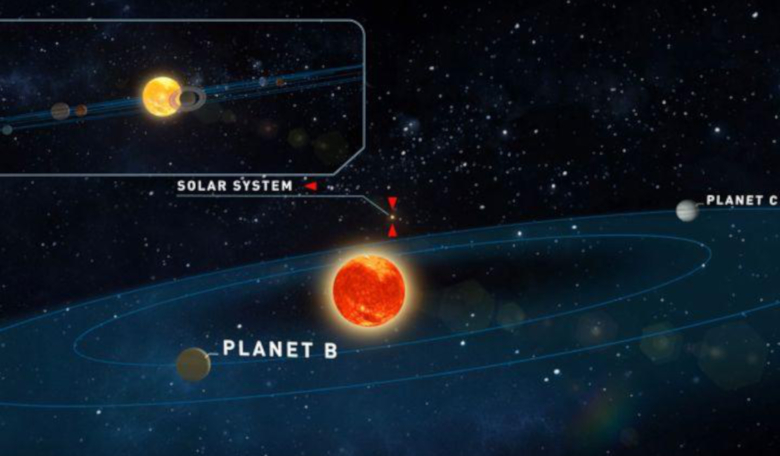Two planets resembling the inner planets of our solar system, have been found around one of our closest neighbouring and smallest known stars, called "Teegarden's star" – a mini version of our Sun that is ten times lighter.
Despite its relative close proximity – Teegarden’s star is located just 12.5 light years away from Earth – this cool, red dwarf, only came to the attention of astronomers in 2003, after its discoverer Bonnard J. Teegarden, found it in data collected via the Near-Earth Asteroid Tracking (NEAT) program. It has long been thought that many undiscovered dwarf stars exist within 20 light-years of Earth but their dim appearance means they are easily overlooked in traditional star surveys.
It turns out Teegarden’s star was actually first observed in 1951, and is visible on photographic plates from the Palomar Sky Survey, but its significance went unnoticed due to the lack of professional astronomers at the time of its accidental discovery.
Now, this low-temperature, and low mass star, which if it was packed with a bit less gaseous material would make it a brown dwarf instead of a red dwarf, has been found to house two Earth-like worlds that are only slightly heavier than our planet. Just as exciting, they are also located in the so-called habitable zone, where water can be present in liquid form, explains lead author Mathias Zechmeister of the Institute for Astrophysics at the University of Göttingen who detected the planets as part of the Carmenes project.
However, like most red and brown dwarfs Teegarden’s star emits most of its energy in the infrared spectrum giving it a temperature of about 2,700 degrees Celsius, about half that of our own hot ball of plasma. Because of this low-level radiation output, a red dwarf’s habitable zone is much closer to its host star – closer than Mercury is to our own sun.
This makes getting life established on any close-in planets quite difficult. Not only are planets susceptible to tidal locking with their host star, which leaves one side to cook in perpetual scorching sunlight, while the other side perishes in continual frigid night time conditions, regular stellar flares can also cause irreparable disruption. But then again, red dwarfs do have longevity on their sides…
But there is a possibility that more planets in the Teegarden system could also be found lurking further out, and if any inhabitants had progressed to an evolutionary state like ours, there is a chance they could be waving at us right now.
From its position relative to ours, any locals in the Teegarden system (Teegardians?) would be able to see planets in our Solar System pass in front of the Sun using the Transit method; a method that detects the minute dimming of a star as a planet passes in front of it and a technique commonly used by us Earthlings.











